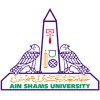
Effectiveness of Inactive Vitamin D Supplementation in Non-Alcoholic Fatty Liver Disease Patients...
Non-Alcoholic Fatty Liver DiseaseAim of work The aim of our study is to assess the effectiveness and safety of high oral loading dose of inactive vitamin D supplementation on the clinical parameters related to liver steatosis, glycaemic control, insulin resistance and metabolic profile in NAFLD patients

A Trial to Evaluate the Safety Tolerability and Pharmacokinetics of B1344 by Subcutaneous Injection...
Nonalcoholic SteatohepatitisTo evaluate the safety, tolerability, and immunogenicity of B1344 by single subcutaneous (s.c.) injection in healthy subjects

A Study to Evaluate the Efficacy and Safety of ALN-HSD in Adult Participants With Non-alcoholic...
Nonalcoholic SteatohepatitisThe study is researching an investigational drug called ALN-HSD (called "study drug" in this form). The study is focused on participants who are known to have non-alcoholic steatohepatitis (NASH). NASH is a form of non-alcoholic fatty liver disease (NAFLD). NASH occurs when fat builds up in liver cells, damaging them, and making the liver inflamed and stiff from fibrosis (scar tissue). NASH can progress to cirrhosis (long term scarring) and liver failure (when your liver cannot perform its job). The aim of the study is to see the effect of the study drug on lessening liver scarring side effects related to NASH. The study is looking at several other research questions, including: How ALN-HSD works to improve liver function and lessen NASH related inflammation in the liver What side effects may happen from receiving the study drug How much study drug and study drug metabolites (byproduct of the body breaking down the study drug) are in your blood at different times Better understanding of the study drug and NASH

Effect of Probiotics or Berberine in Hepatic Steatosis Markers, Cardiometabolic and Microbiotic...
Non Alcoholic Fatty LiverObesityEffect of oral selected Probiotics (PRO) and/or Berberine (BBR) supplementation on hepatic steatosis markers, cardiometabolic profile, and gut microbiota profile in the non-alcoholic fatty liver (NAFL) - a randomized double-blind clinical study.

Effect of Anti-osteoporotic Medications on Nonalcoholic Fatty Liver Disease
Nonalcoholic Fatty LiverOsteoporosis1 moreNonalcoholic fatty liver disease (NAFLD) is a chronic, metabolic liver disease that is closely related to obesity, type 2 diabetes mellitus (T2DM) and metabolic syndrome (MetS) in a bidirectional mode. NAFLD affects approximately 25% of the worldwide population. NAFLD refers to a phenotypic spectrum, including steatosis, inflammation and fibrosis, which can lead to cirrhosis and hepatocellular carcinoma in a minority of patients. However, despite its high prevalence, morbidity and mortality, as well as the extensive research in the field, there is not to-date a licensed medication specifically for NAFLD. Emerging evidence supports a potential association between NAFLD and osteoporosis; the prevalence of osteoporosis is probably higher in patients with NAFLD and, vise versa, the prevalence of NAFLD may be higher in patients with osteoporosis. In this context, it has been proposed that certain medications for osteoporosis may also prove to be beneficial to NAFLD. Denosumab, a human monoclonal IgG2 antibody against the receptor activator of nuclear factor kappa-B (NF-κB) ligand (RANKL), is currently an established treatment for osteoporosis and other metabolic bone diseases. The axis RANKL-receptor activator of nuclear factor NF-κB (RANK)-osteoprotegerin (OPG) has been demonstrated as a key regulator of bone metabolism and, when dysregulated, it contributes to the pathogenesis of osteoporosis and other metabolic bone diseases. Interestingly, experimental studies have shown that circulating and hepatic RANKL may be upregulated in mice with diet-induced NAFLD, rendering RANKL a potential contributor to the pathogenesis of NAFLD, and ideally, a promising pharmacological target. On the other hand, bisphosphonates, another established, first-line treatment for osteoporosis, are expected to have no significant effect on hepatic metabolism in patients with NAFLD due to their pharmacokinetics and mechanism of action. This is a prospective non-randomized study which aims to investigate the comparative effect of denosumab versus bisphosphonates on hepatic steatosis and fibrosis in women with postmenopausal osteoporosis and concomitant NAFLD.

An Intervention Study of Compound Silymarin in Patients With Non-alcoholic Fatty Liver Disease
Nonalcoholic Fatty Liver DiseaseNon-alcoholic fatty liver disease (NAFLD) has become the most prevalent liver disorder in China. The aim of this project is to evaluate the effects of compound silymarin on biomarkers of lipid metabolism and inflammation in the patients with NAFLD.

The Effect of Coenzyme Q10 on Endothelial, Vascular and Myocardial Function
Non-Alcoholic Fatty Liver DiseaseNon-alcoholic fatty liver disease (NAFLD) is associated with increased cardiovascular risk. The aim of this study is to investigate the effects of coenzyme Q10 (CoQ10) on endothelial, vascular and myocardial function in patients with NAFLD

Study to Evaluate the Safety, Tolerability, and Efficacy of ASC41 Tablets in Adult Patients With...
Non-alcoholic Fatty Liver DiseaseNon-alcoholic SteatohepatitisThis is a Phase 2, Double-Blind, Randomized, Multicenter, Placebo-controlled Study to Evaluate the Safety, Tolerability, and Efficacy of ASC41 in Adults with Nonalcoholic Steatohepatitis (NASH).

A Study to Assess the Safety, Tolerability, and Pharmacokinetics of AZD9550 Following Single Ascending...
Non-alcoholic SteatohepatitisThis is a Phase I Randomised Single-blind Placebo-controlled Study to Assess the Safety, Tolerability, and Pharmacokinetics of AZD9550 Following Single Ascending Dose Administration to Healthy Participants.

Study of HSK31679 in Subjects With Hypercholesterolemia With Nonalcoholic Fatty Liver Disease(NAFLD)...
HypercholesterolemiaThe purpose of this study is to assess the efficacy and safety of HSK31679 tablets compared with placebo in reducing low-density lipoprotein cholesterol (LDL-C) and MRI-PDFF after 12 weeks of treatment in patients with hypercholesterolemia and non-alcoholic fatty liver disease (NAFLD).
